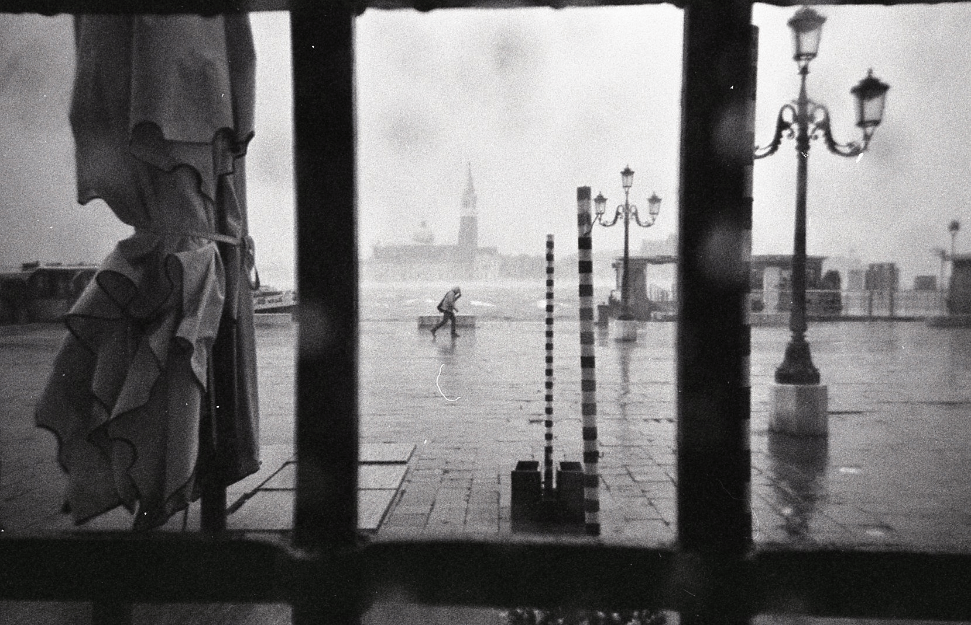By Erica Belli
I am a big fan of disposable cameras, both for my personal work and for photovoice purposes. Disposable cameras have a limited number of images each. What better way to encourage your photovoice participants to concentrate and really think about their images? I’ve also noticed that younger generations are intrigued by this “vintage” tool, and treat it with respect. They know about film cost and the lack of infinite opportunities to retake the same photo. Because of these limitations, I find disposable cameras to be a great tool for “brain image making” as well. And this is a “life skill” that participants can use in other areas of their life, beyond their photovoice projects. By helping participants learn how to concentrate and think about their images, you may be helping them build skills that enable them to envision future possibilities for themselves in their everyday lives.
Usually when we take a picture with a digital or film camera (even with our cell phones), we have a certain amount of power over the process. We can adjust the camera’s shutter speed, the aperture, and the depth of field. We can use different types of film – color, black and white, fast speed, slow speed. However, when we use disposable cameras, we need to change our point of view regarding the technical aspects of taking a photograph. Getting the most out of your disposable camera may mean adjusting yourself instead.
Disposable cameras have limited flexibility: they have certain settings you cannot change. For example, they have a:
- Fixed lens (usually 35mm- allowing for a wide angle to shoot even landscape photos)
- Fixed aperture (something around 8.0f – where everything that is about four or more feet away should be in focus)
- Fixed speed (1/125- so that subjects can look still)
- Fixed ISO (usually 400).
The fixed aspects of a disposable camera means that we, as photographers, need to adjust to these settings. Therefore, to successfully translate the image in our head into a picture, we need to know first how your camera “sees” and the types of issues we could encounter on your path to getting the image we want.
There are three common issues that frustrate people when looking at photos they have taken with a disposable camera. For each issue, I provide some remedial strategies. The examples provided are from a photovoice project I facilitated with migrant youth in the town of Cinisello Balsamo, Milan, in Italy.
Issue: Low Light / Dark Picture

© Photo from “Spunti di Vista”- a photovoice project with migrant youth in the town of Cinisello Balsamo, Milan. Used with permission.
Issue: The disposable camera sees much less light than we do, therefore, the image may be darker than we expect. When you are taking a photo outdoors near sunset or dawn, keep in mind that the camera will record the image as if the time were an hour later in the evening or an hour earlier in the morning, when the light is lower and darkness more prominent.
- Strategy 1: To understand the camera’s point of view on light, try this exercise: Squeeze your eyelids close together, as if you were to almost close your eyes. Observe how doing this darkens or mutes what you see. That is how your disposable camera sees or records incoming light. Whatever the camera sees through its lens and records on film will be darker than what you see with your eyes wide open.
- Strategy 2: If you are taking a photo indoors – unless you are near a window during a bright day – use the camera’s built-in flash to avoid blurry or indistinct images.
Issue: Blurry pictures/out of focus

© Photo from “Spunti di Vista”- a photovoice project with migrant youth in the town of Cinisello Balsamo, Milan. Used with permission.
Issue: With disposable cameras – and Polaroid cameras as well – the lens cannot focus on any object closer than four feet away. Anything closer than four feet away will look blurry and out of focus in the printed image. However, when the photographer looks through the viewfinder, the image will not look blurry! So how can your participants take photos from a close-up perspective?

© Photo by Erica Belli
Strategy: Use the camera creatively to show different areas of interest in the same picture (especially when trying to give perspective or a specific focus in a photo). I took this shot with a b/w disposable camera in Venice. To add depth of field to it, I decided to frame the grid in front of me into the picture. Because of its proximity I knew that it would come out blurry (or out of focus) in the final print. This served my intention well: to bring all the viewer’s attention to the man walking in the rain.
Issue: Centering and composing pictures

© Photo by Erica Belli
Issue: What we see through the camera’s “viewfinder” is slightly different from what the actual camera lens will see and record. With most disposable cameras, the viewfinder is separate from the camera lens, often slightly to the left.
Strategy: This shift means that if we want to have a particular object or person in the center of the photo, we need to adjust how we are pointing the camera. We will need to move the subject in the viewfinder a bit to the side – which will place our camera lens right where we want it. Here is where our mental image for a photo may be useful. What angle will compose the picture the way we want it to look? How do we need to move or point the camera to get the image we want?
Other issues that can affect photo-taking for photovoice when using disposable cameras include: Mixed light source, sticky fingers, accidental shots, and foggy pictures. The handout “Disposable Cheat Sheet” provides a quick overview of the issues noted in this blog post and strategies for avoiding them. Use the “Cheat Sheet” as a quick reference guide to support your photovoice participants’ photo-taking.
In conclusion, disposable cameras can be an excellent option for photovoice projects. Participants can use them to take great pictures. Some simple instructions from you, as a photovoice researcher or facilitator, will help participants use their limited number of pictures to their best advantage. The strategies described in this blog post are based on my photographic training and on actual experience facilitating photovoice. I hope the practical ideas presented here will help you support your participants in getting good images and feeling pleased with their photovoice photos.
Erica Belli –
Erica is an educator and photographer based in Italy. She studied at the Italian Institute of Photography and is currently attending the Faculty of Psychology of the G.Marconi University. She facilitates photovoice projects in Northern Italy and focuses on photo-creative approaches to therapy.
